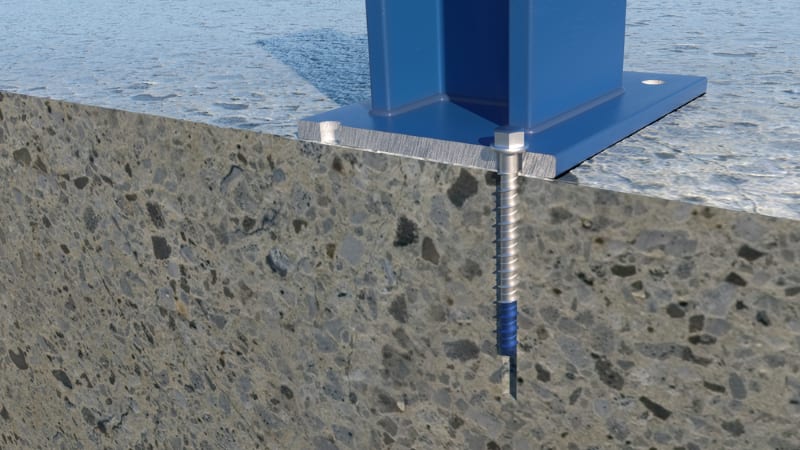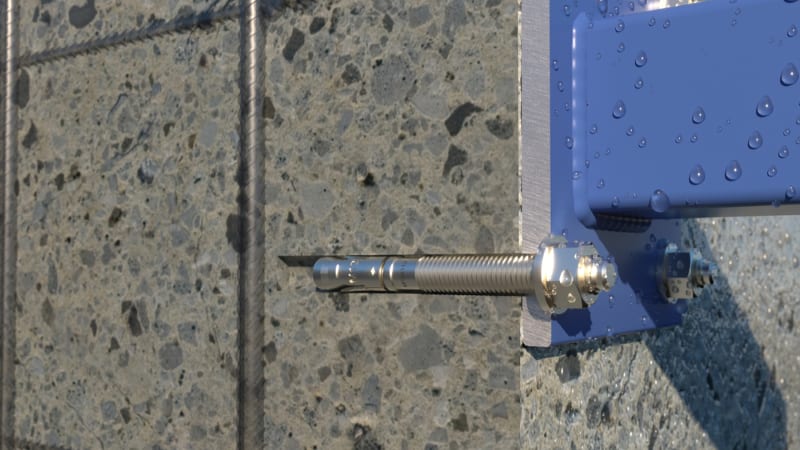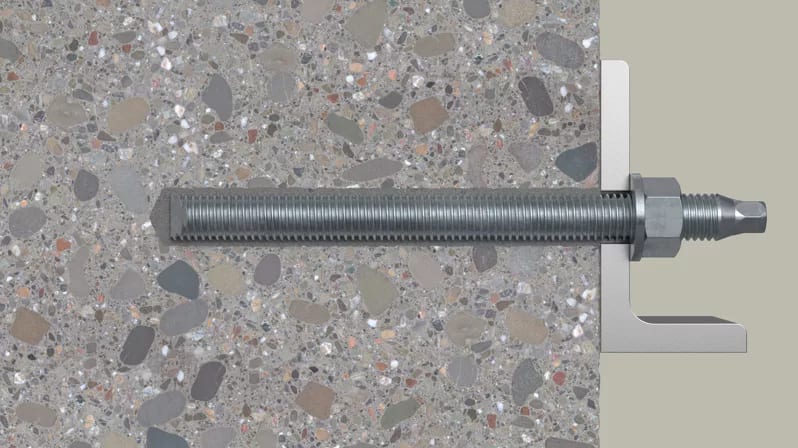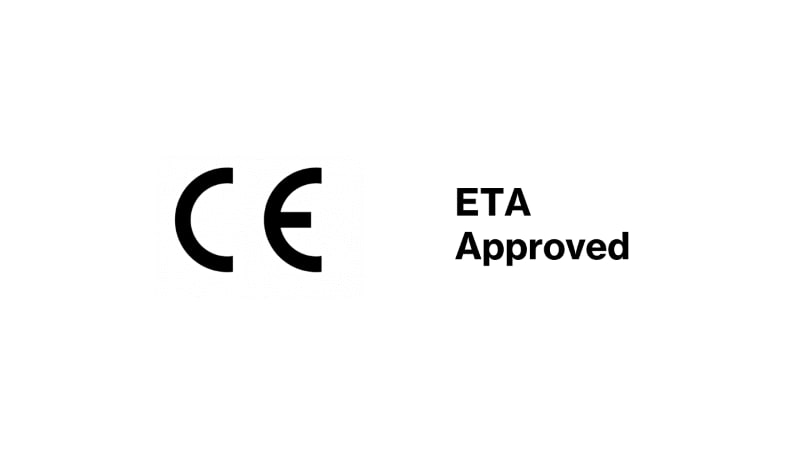
Which anchors should I use for façade applications?
- Read time: 1.5 minutes
- Date: 13 Mar 2024
- Rainscreen & Façades
Using the wrong anchor could invalidate the system warranty and in a worst-case scenario could contribute to total system failure.
To ensure the safe specification of anchors, we always advise customers to follow the guidance in BS 8539, which identifies five factors that must be considered:
The type of substrate
The loadings the anchor will be subject to
The risk of corrosion
How the anchor will be installed
Whether accreditation is available
What type of substrate will you be fixing into?
Façades and rainscreens are fixed to many different substrates including concrete, brickwork (including hollow brick), and blockwork of different densities. So, it's important to ensure that the anchor chosen is designed to be used in the substrate that you'll be fixing into.
For concrete substrates, consideration should be given to the condition of the concrete and whether it is cracked or non-cracked. Concrete can become cracked for a variety of reasons including thermal movement and deflection. Whether the concrete is cracked or not can only be determined by a structural engineer - always assume it is cracked unless the appropriate tests have been undertaken.
What loadings will be placed on the façade?
Two principle types of loading that will affect anchors during the building's lifetime: the weight of the façade (per m2), and live weather loads.
In the UK, live weather loads from the wind are the largest force to be placed on the façade. The wind can be multi-directional and variable, with strong gusts that come from any direction. This increases the negative or positive load within, and on, the façade system - and can result in material fatigue or complete failure if the wrong components are chosen and installed. In severe storms, strong winds can even rip out the rainscreen façade.
So it's important to make sure wind load calculations are undertaken in accordance with the published British Standards.
What is the risk of corrosion?
As with any type of fastener, the material the anchor is made from will need to withstand corrosion. The easiest way to determine the corrosion risk from different environments is to look at the ISO 9223 classification table.
Typically, anchors used in environments with a low/medium risk of corrosion such as rural and urban environments should be made from A2/304 stainless steel. Anchors made from A4/316 stainless steel should be used in high corrosion risk environments, such as coastal areas.
Want to find out more about corrosion? Check out our article here
You must also consider bi-metallic corrosion. Many façades and rainscreens use either aluminium or stainless steel brackets. Bi-metallic corrosion occurs when two dissimilar metals come into contact with each other in the presence of an electrolyte, such as water. The interaction between the two metals, known as electrolysis, causes corrosion. Using a stainless steel fastener will prevent this.
How are the anchors installed?
The installation method may also affect your decision. In some cases, your choice may be based on the time taken to install the anchor (we all know that time equals money). In others, the installation method will be dictated by the condition of the substrate.
There are three types of installation methods for anchors:
Interlocking anchors, such as concrete screws, work by creating a 'key' with the thread in the substrate, creating the resistance needed to hold it into position.

Friction anchors, such as through bolts or nylon frame anchors, create friction against the perimeter of the pre-drilled hole. This places large amounts of stress on the substrate so they may not be suitable for certain substrates, as this will cause the fixing to fail.

Bonded anchors, such as resin anchors, are chemically bonded to the substrate. This limits the stress placed on the substrate, making them ideal for projects where the substrate has deteriorated.

Are the anchors accredited?
If available, always choose anchors with ETA (European Technical Assessment) / CE Marking. This demonstrates the products have been rigorously assessed and meet the necessary safety, health and environmental legislation.

When installing into concrete, remember to check whether the anchor has ETA approval for cracked or non-cracked concrete, as this will affect the accreditation required. For example, through bolts that are Option 1 ETA approved have been designed, assessed and tested for use in both cracked and non-cracked concrete, while those that are Option 7 ETA approved are only suitable for use with non-cracked concrete.
What should I do if there is no accreditation for the substrate?
Unfortunately, not all substrates are included within ETA/CE marking, or you may not know what the substrate is (as if often the case with recladding projects). In these circumstances, you will need to ask your fastener manufacturer to undertake on-site preliminary testing to confirm the suitability of your chosen anchor.






